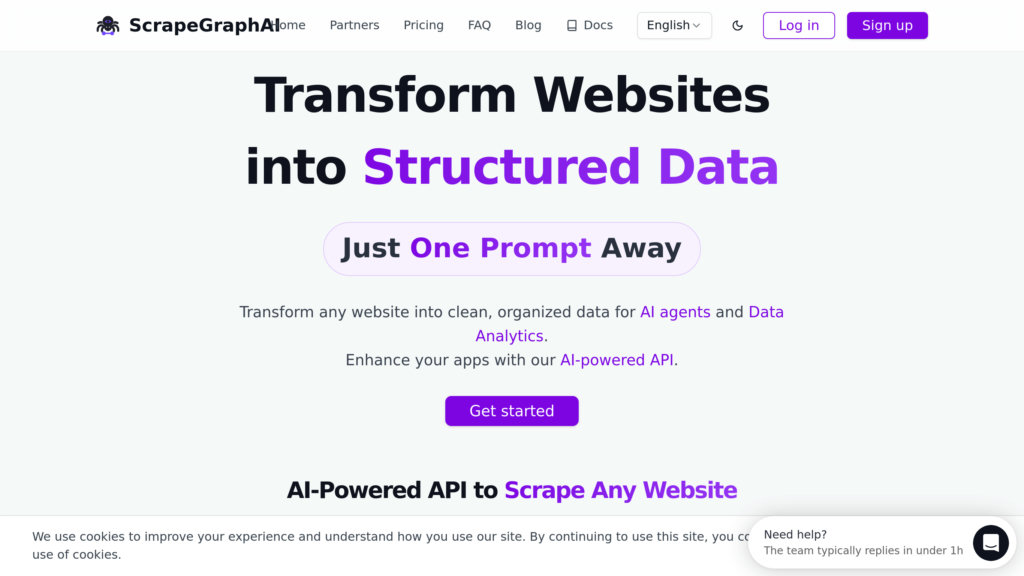ScrapeGraphAI
Intelligent web scraping tool for automatic structured data extraction
Introduction
What is ScrapeGraphAI?
ScrapeGraphAI represents a cutting-edge open-source Python solution that redefines web data extraction by combining sophisticated large language models with directed graph architecture. This powerful framework constructs dynamic scraping pipelines capable of adjusting to evolving website designs while efficiently pulling structured data from various sources including websites, HTML, XML, JSON, and Markdown documents. The system streamlines data collection by enabling users to define their requirements using everyday language, automating the entire extraction workflow with minimal programming knowledge required.
Key Features:
• Leverages advanced language models to understand user instructions and dynamically adjust scraping approaches in response to website modifications, significantly reducing upkeep demands.
• Utilizes directed graph structures built from interconnected nodes to create versatile scraping processes that manage intricate data collection challenges.
• Works seamlessly with numerous data formats including HTML, XML, JSON, and Markdown, providing flexible data acquisition capabilities.
• Supports leading language model platforms such as OpenAI GPT, Google Gemini, Groq, Azure, Hugging Face, and local models through Ollama integration.
• Offers tailored solutions including SmartScraper for individual page extraction, SearchScraper for multi-page result collection, Markdownify for format conversion, and additional specialized tools.
• Empowers users to define extraction objectives using straightforward English commands, making web scraping accessible to non-technical users.
Use Cases:
• Automatically gather product specifications, pricing information, and stock status from rival e-commerce platforms to monitor market dynamics.
• Compile news headlines, article content, and metadata from media outlets and social networks for analytical and marketing purposes.
• Systematically collect information about competing products, customer feedback, and promotional tactics to support strategic planning.
• Create extensive, well-organized datasets by extracting information from diverse online sources to develop machine learning algorithms.
• Extract real estate listings, property descriptions, and pricing data for investment analysis and market evaluation.
• Generate comprehensive reports, executive summaries, and analytical insights using collected data with reduced manual intervention.
